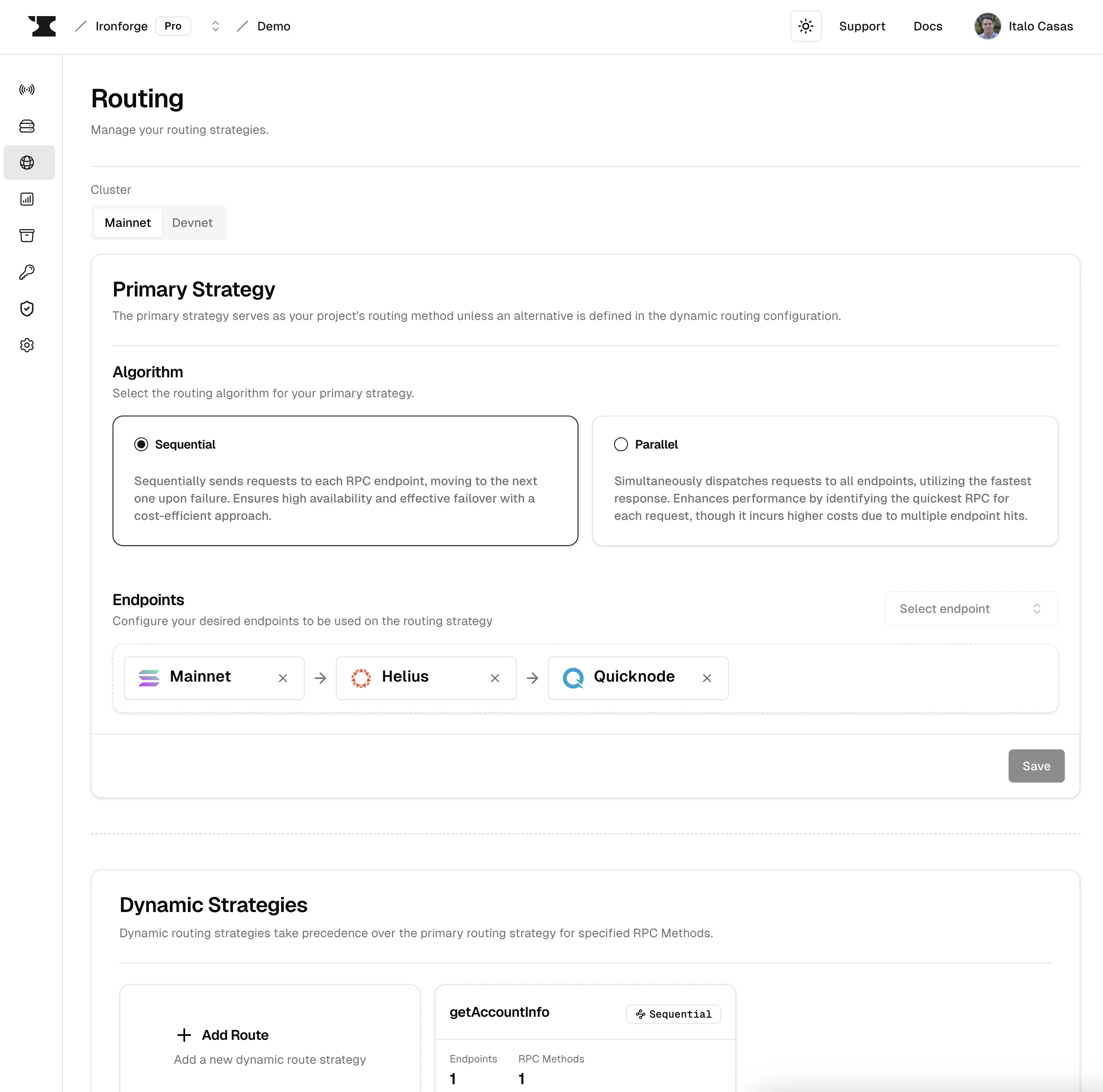Routing
Learn how to configure routing rules in the Ironforge Gateway.
At Ironforge you can setup routing rules to distribute incoming requests to multiple RPC endpoints. This is useful for load balancing, failover, and other scenarios where you need to distribute requests base on RPC methods or other criteria.
Primary Strategy vs Dynamic Strategies
When a request is received by Ironforge, it will first check if there is a dynamic strategy defined for the RPC method in the request. If there is, it will use the dynamic strategy to route the request. If there is no dynamic strategy defined for the specific RPC method, it will use the primary strategy.

Routing Algorithms
Sequential
The Sequential routing algorithm follows a sequential order when sending requests to RPC endpoints. When a request is made, Ironforge forwards it to the first available RPC endpoint in the configured list. If the first endpoint responds successfully, Ironforge uses that response. However, if the first endpoint encounters an error or is unavailable, Ironforge automatically moves to the next available endpoint in the sequence. This process continues until a successful response is obtained or all endpoints have been attempted.
Parallel
The Parallel routing algorithm is designed for maximizing performance and responsiveness. When a request is received, Ironforge simultaneously sends it to all available RPC endpoints. Ironforge then uses the response from the first endpoint that responds successfully, discarding the responses from the remaining endpoints. This approach leverages parallel processing to reduce response times. However, it's important to note that the Parallel algorithm may incur higher costs due to the increased utilization.